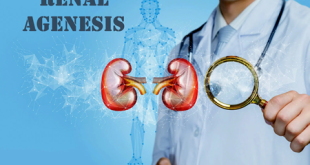Definition
Rectocele is a herniation (bulge) of the front wall of the rectum into the back wall of the vagina. The tissue between the rectum and the vagina is known as the rectovaginal septum and this structure can become thin and weak over time, resulting in a rectocele. When rectoceles are small, most women have no symptoms. A rectocele may be an isolated finding or occur as part of a generalized weakening of the pelvic floor muscles. Other pelvic organs such as the bladder (cystocele) and the small intestine (enterocele), can bulge into the vagina, leading to similar symptoms as rectocele.
Types of Rectocele
It can be classified into three types or grades:
Grade 1 Rectocele: A small bulge of the rectum into the vagina. It may not cause significant symptoms.
Grade 2 Rectocele: A moderate bulge of the rectum into the vagina. It can lead to difficulties with bowel movements and a feeling of pressure in the vagina.
Grade 3 Rectocele: The most severe type, with a significant protrusion of the rectum into the vagina. It can cause chronic constipation, difficulty passing stool, and a sensation of vaginal bulging.
Epidemiology
The incidence and prevalence of all pelvic organ prolapse are unknown because many patients are asymptomatic and do not seek out medical care for their prolapse. Another reason for unknown prevalence is the lack of a comprehensive classification system for rectoceles. For pelvic organ prolapse in general, the incidence is around 67% of parous women. About 11.1% of women by the age of 80 years have undergone surgical intervention for pelvic organ prolapse.
Pathophysiology
A rectocele develops when the rectum herniates through into the vaginal channel and the healthy rectovaginal septal tissue loses its structural integrity. Childbirth, aging-related changes in connective tissue, increased tension on the tissue from straining or obesity, and other factors can all cause loss of integrity.
As they might mount up, a patient may have a single issue or several. When rectocele is symptomatic, the vaginal bulge caused by tissue herniation, pelvic pressure, and alterations in feces are the most frequent signs.
Symptoms of Rectocele
A small rectocele may not cause any symptoms, especially if it bulges less than 2 centimeters (less than 1 inch) into the vagina. However, larger rectoceles can trigger a variety of rectal and vaginal complaints, including:
- A bulge of tissue protruding through the vaginal opening
- Constipation
- Difficulty having a bowel movement
- Pain or discomfort during sexual intercourse
- A feeling that the rectum has not emptied completely after a bowel movement
- A sensation of rectal pressure
- Rectal pain
- Difficulty controlling the passage of stool or gas from the rectum
- Low back pain that is relieved by lying down. In many women, this back pain may worsen as the day goes on and is more severe in the evening.
In some cases, the patient must use a technique called manual evacuation or digitation to help empty the rectum. In this technique, the patient presses on the rectocele with her fingers while defecating to help the stool to pass.
Causes of Rectocele
Some of the events that may weaken or thin the rectovaginal septum and cause a rectocele include:
- Vaginal (normal) childbirth
- Giving birth to multiple babies
- A long and difficult labour
- Assisted delivery during childbirth, including the use of forceps
- Tearing during childbirth, particularly if the tear extended from the vagina to the anus
- Episiotomy (a surgical cut made to enlarge the vaginal opening during childbirth to avoid injury to mother and baby), particularly if the cut extends to the anus
- Hysterectomy
- Pelvic surgery
- Chronic constipation
- Straining to pass bowel motions
- Advancing age, as older women are more prone to rectocele.
Risk factors
The following factors may increase the risk of rectocele:
- Genetics – Some women are born with weaker connective tissues in the pelvic area.
- Childbirth – Delivering more than one child creates a higher risk of having rectocele.
- Ageing – Growing older means naturally losing muscle mass and elasticity.
- Being overweight – Carrying extra body weight causes stress on the pelvic floor tissues.
What are the complications of rectocele?
Rectocele is a condition where the rectum bulges into the back wall of the vagina. It can lead to several complications, such as:
- Difficulty in emptying the bowels completely, causing chronic constipation or feeling like you haven’t fully emptied your bowels.
- Pain and discomfort in the rectal and vaginal areas, especially during bowel movements or sexual intercourse.
- Problems with controlling bowel movements, which can result in fecal incontinence (leakage of stool) or difficulty in controlling gas.
- Urinary symptoms like frequent urination, urgency, or leakage of urine, particularly if rectocele is combined with bladder prolapse.
- Increased risk of urinary tract infections (UTIs) due to the disrupted anatomy that allows bacteria from the rectum to enter the urinary tract more easily.
- Pain during sexual intercourse (dyspareunia) due to pressure and stretching of the vaginal tissues.
Remember, the severity of symptoms can vary from person to person. If you think you have a rectocele or are experiencing any of these complications, it’s important to see a healthcare professional for diagnosis and appropriate treatment options.
Diagnosis
A diagnosis of posterior vaginal prolapse often happens during a pelvic exam of the vagina and rectum.
The pelvic exam might involve:
- Bearing down as if having a bowel movement. Bearing down might cause the prolapse to bulge, revealing its size and location.
- Tightening pelvic muscles as if stopping a stream of urine. This test checks the strength of the pelvic muscles.
You might fill out a questionnaire to assess your condition. Your answers can tell your health care provider about how far the bulge extends into the vagina and how much it affects your quality of life. This information helps guide treatment decisions.
Rarely, you might need an imaging test:
- MRI or an X-ray can determine the size of the tissue bulge.
- Defecography is a test to check how well your rectum empties. The procedure combines the use of a contrasting agent with an imaging study, such as X-ray or MRI.
Treatment
The treatment of rectocele depends on the severity of symptoms and the impact on a person’s quality of life. In mild cases where rectocele doesn’t cause significant discomfort or functional problems, conservative measures may be recommended. However, if symptoms are bothersome or if conservative measures fail to provide relief, more invasive treatment options may be considered. Here are some common treatments for rectocele:
Lifestyle and self-care measures: In mild cases, making certain lifestyle changes can help manage symptoms. This may include maintaining a healthy diet with adequate fiber and fluid intake to prevent constipation, practicing regular bowel movements, and avoiding activities that strain the pelvic floor muscles (such as heavy lifting).
Pelvic floor exercises: These exercises, often referred to as Kegel exercises, can help strengthen the muscles that support the rectum and vagina. A pelvic floor physical therapist can provide guidance on the appropriate exercises and techniques.
Vaginal pessary: A pessary is a removable device that is inserted into the vagina to provide support and help alleviate the symptoms of rectocele. It can be an option for those who prefer non-surgical treatment or are not suitable candidates for surgery.
Hormone replacement therapy (HRT): HRT can help women manage the symptoms of the menopause, plus the extra oestrogen will help keep the pelvic floor muscles strong.
Surgical repair: In more severe cases or when conservative measures are ineffective, surgery may be recommended. There are different surgical approaches, including transvaginal repairs, laparoscopic procedures, or robotic-assisted surgeries. The specific technique used will depend on various factors, including the severity of the rectocele and the patient’s overall health.
Medications
Your doctor may recommend the following medications in case the other remedies provide very little to no relief:
- Stool softeners to help with constipation
- Hormone replacement therapy (HRT) to women who have had menopause
- A vaginal pessary, a rubber ring-like structure that is inserted into the vagina to keep the bulge from protruding through the vaginal opening
It’s important to consult with a healthcare professional, such as a gynecologist or a colorectal surgeon, to determine the most appropriate treatment option based on individual circumstances. They can evaluate the severity of the rectocele, consider the impact on daily life, and discuss the potential risks and benefits of each treatment method.
Can rectocele be prevented?
You can’t prevent a rectocele or pelvic organ prolapse. Still, you can put good practices into place that can strengthen your pelvic floor. Many of the same strategies used to manage mild cases of rectocele can be used to reduce your risk of prolapse.
Perform Kegel exercises regularly: Kegel’s can strengthen your pelvic floor muscles, which is especially important after childbirth. Ask your healthcare provider about when it’s safe to perform Kegel’s after you’ve had your baby.
Treat and prevent constipation: Drink plenty of fluids and eat high-fiber foods, such as fruits, vegetables, beans and whole-grain cereals. Aim for 25 to 35 grams of fiber daily and eight glasses of water. Use stool softeners if you need them.
Avoid heavy lifting and lift correctly: When lifting, use your legs instead of your waist or back. Get help when lifting heavier objects.
Manage a cough: Get treatment for a chronic cough or bronchitis and don’t smoke.
Maintain a healthy weight: Talk with your doctor to determine your ideal weight and get advice on weight-loss strategies if you need them.
 Diseases Treatments Dictionary This is complete solution to read all diseases treatments Which covers Prevention, Causes, Symptoms, Medical Terms, Drugs, Prescription, Natural Remedies with cures and Treatments. Most of the common diseases were listed in names, split with categories.
Diseases Treatments Dictionary This is complete solution to read all diseases treatments Which covers Prevention, Causes, Symptoms, Medical Terms, Drugs, Prescription, Natural Remedies with cures and Treatments. Most of the common diseases were listed in names, split with categories.







